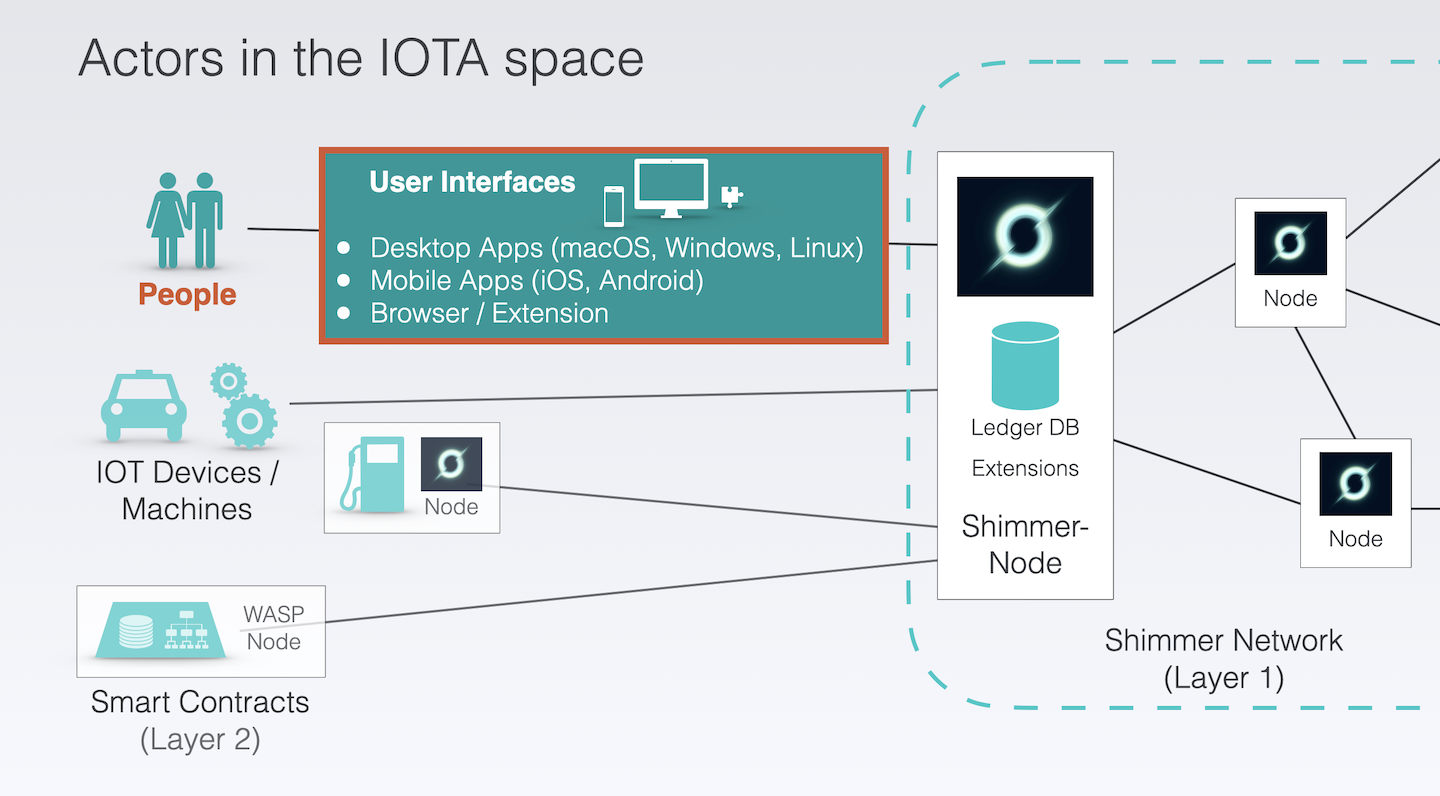💻 What you'll get
Explore the world of Distributed Ledger Technology with a hands-on guide using this Github page, companion repositories, and YouTube videos
Seamless User Interfaces for human interaction

This tutorial is about building User Interfaces for human interaction (highlighted in red)
The focus of this project is to provide a user interface or interaction capability with IOTA for humans. While IOT devices, machines or smart contracts can also interact with IOTA, the primary goal here is to create a seamless experience for people to connect and engage with IOTA's Layer 1 network.
The main goal is achieved by building mobile and desktop apps. The focus is on the target platforms that Flutter supports, with the caveat that the proof-of-concept has only been tested on iOS, Android, and macOS.
Rust plays a crucial role in IOTA for Flutter, too. All of IOTA's libraries are written in Rust and are referred to as the Single Source of Truth. I will explain how these Rust libraries are used as a dependency in a custom library which is cross-compiled and integrated into Flutter.
Tutorial Structure: Overview, Fundamentals, and Practical Chapters
The IOTA for Flutter tutorial is divided into several sections, including a fundamentals section for preparing what you need, an overview for getting the key concept, and several practical chapters that focus on building real-world products.
To make it easier to follow along with the written text, each practical chapter has a corresponding repository on GitHub. I also provide some videos to demonstrate the resulting app, the workflow and guide users through important steps, so you can watch over my shoulder as I work through the examples.
The Three Pillars of the Tutorial: Github Page, Repositories and Videos
The practical chapters are structured as follows: first, we start with an introductory chapter to build an app with Flutter and Rust without IOTA. This will introduce the Flutter-Rust-Bridge, the glueing part that brings Flutter and Rust together. Then, we dive into building a simple IOTA-powered app, followed by a comprehensive "Shimmer playground" app to demonstrate all Rust libraries in one app.
As a bonus, I provide the code for the MQTT Chat App. In this chapter, I assume that you have gained enough knowledge and experience from the previous practical chapters.